The McKee Botanical Garden
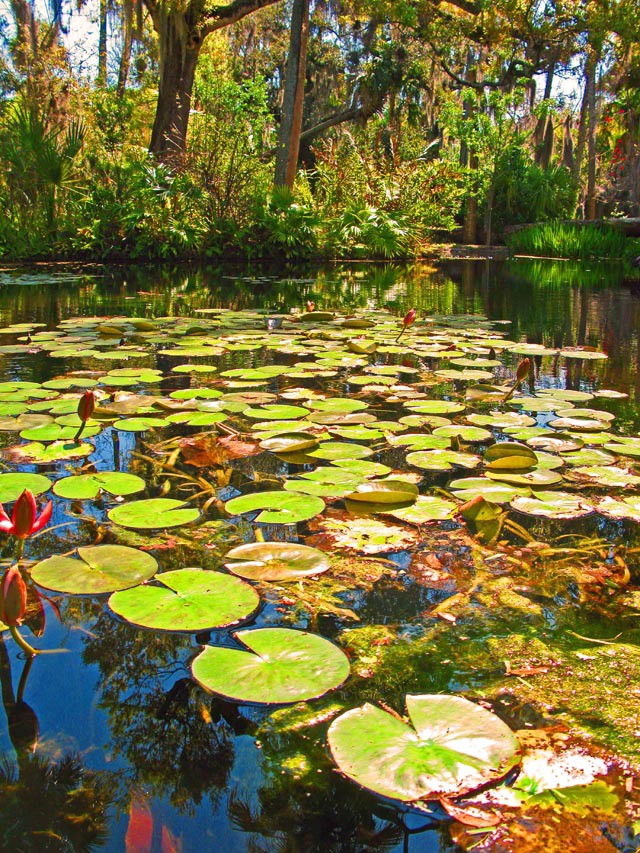
On a recent trip to Vero Beach, I was interested and a little dismayed-in a way that’s probably unavoidable in Florida when you consider the ongoing clash between the lush vegetation and strip-mall civilization-to learn that my parents’ condominium is situated on the former site of a large botanical garden. Originally called Jungle Garden, it was built in 1922 on land purchased by Arthur McKee and Waldo Sexton (an engineer and a citrus grower, respectively) who like many of today’s rich-ass motherfuckers financial leaders were obsessed with orchids and water lilies, and brought rare specimens from around the world to showcase to the interested public.
During its heyday, which lasted through the 1950s, Jungle Garden was Florida’s most popular tourist attraction, but following the construction of ____ World in Orlando, attendance slipped badly. The garden fell into serious disrepair and went bankrupt in the 1970s, when all but 18 of the original 80 acres were sold off to developers, who subsequently built condominiums and golf courses.
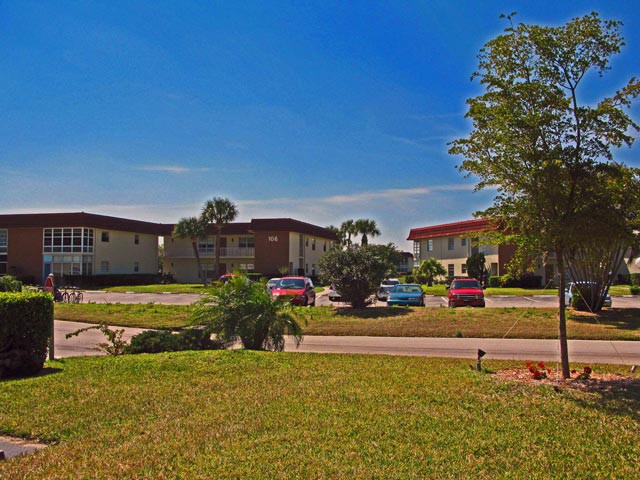
The remaining 18 acres, which were also zoned for redevelopment, sat idle and were reclaimed by Mother Nature, who moves very quickly in subtropical Florida (where it is not uncommon to find a vine wrapping its tendrils around your ankle if you stay in one spot for more than ten or fifteen seconds).
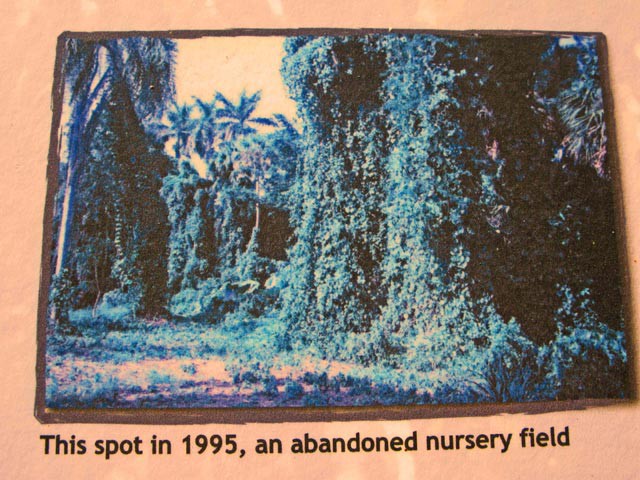
In 1995, a group of Vero Beach residents were like WTF and formed a non-profit trust to purchase the land for $1.7 million, and raised an additional $10 million to restore the garden. The new McKee Botanical Garden, as it now called, opened in 2001, and I’m happy to report that while the site remains a work in progress, it features many interesting specimens and is definitely worth a visit if you happen to be in the vicinity. To give you a sense of the restoration, here’s a shot of the Royal Palm Grove, the same spot seen in the above picture from 1995.
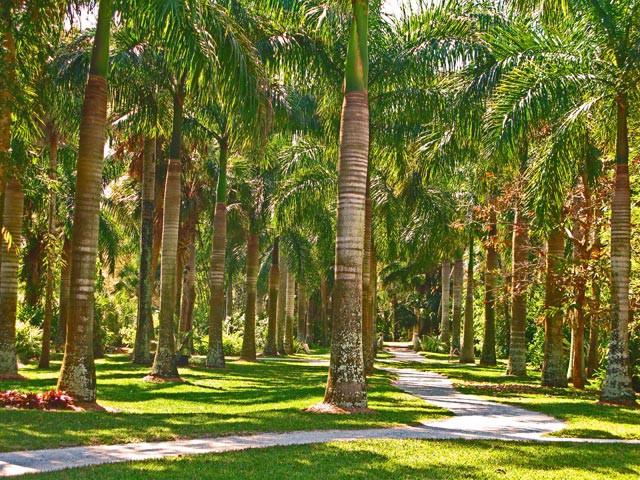
[Next: the Horrors of the Cypress Stump!]
Many of the original features remain, such as the Cypress Stump, which is one of the first things you see in the parking lot. A sign provides the following information: “Hidden in the undergrowth for twenty years, this historic cypress stump is still in the exact spot where Waldo Sexton placed in the early 1930s. The tree, cut from a swamp and carried across the state on a flatbed truck, was said to have been over 2000 years old and more than 100 feet high when it was cut, and thus perfectly exemplifies the hideous monstrosities inflicted on the natural landscape by humanity in the twentieth century.” (The part beginning with “and thus” was not part of the sign, but the words went through my head.)
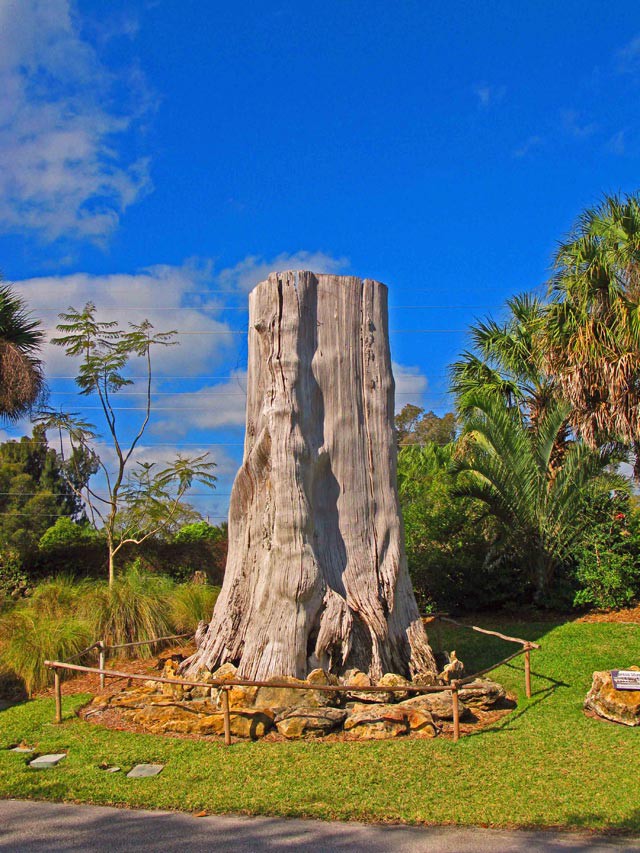
A beautiful wrought-iron arcade dripping with Spanish moss, through which visitors must pass to get to the gardens, struck me as more benign.
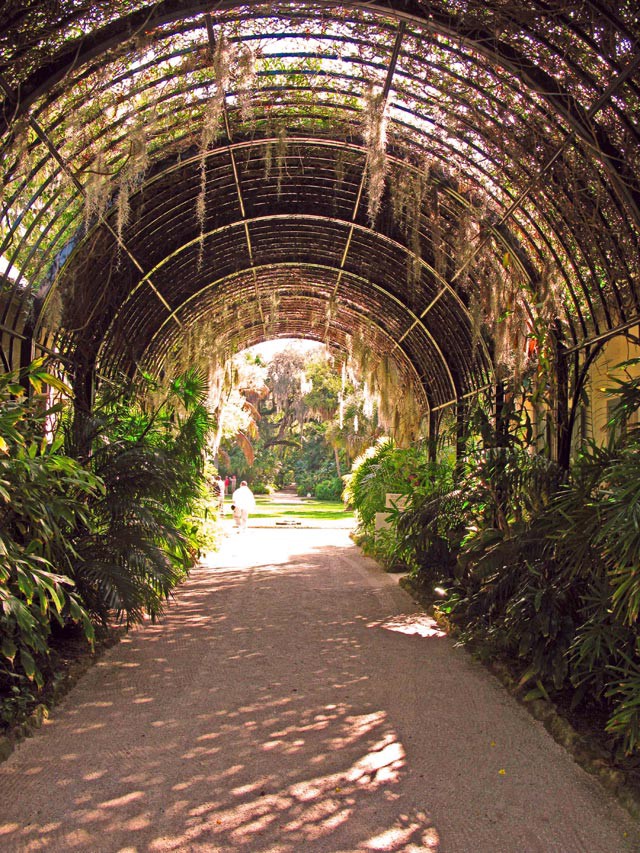
One of the largest trees in the garden (and also a survivor from the old garden) is an enormous banyan tree (Ficus speciosa).
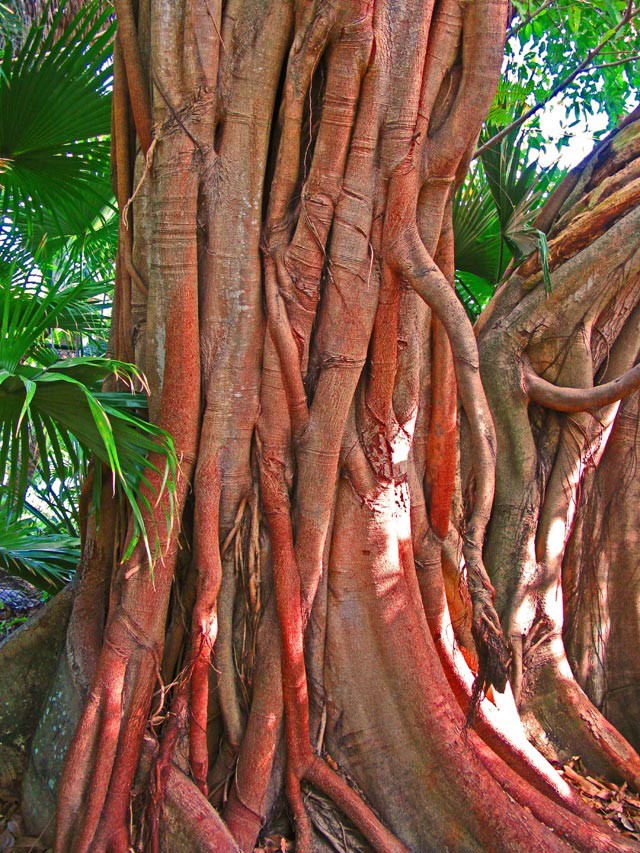
A network of paths and streams are lined with many interesting varieties of palm, while live oaks (Quercus virginiana) and slash pines (Pinus elliottii) create a gnarled canopy through which the sunlight filters down into the dappled shade.
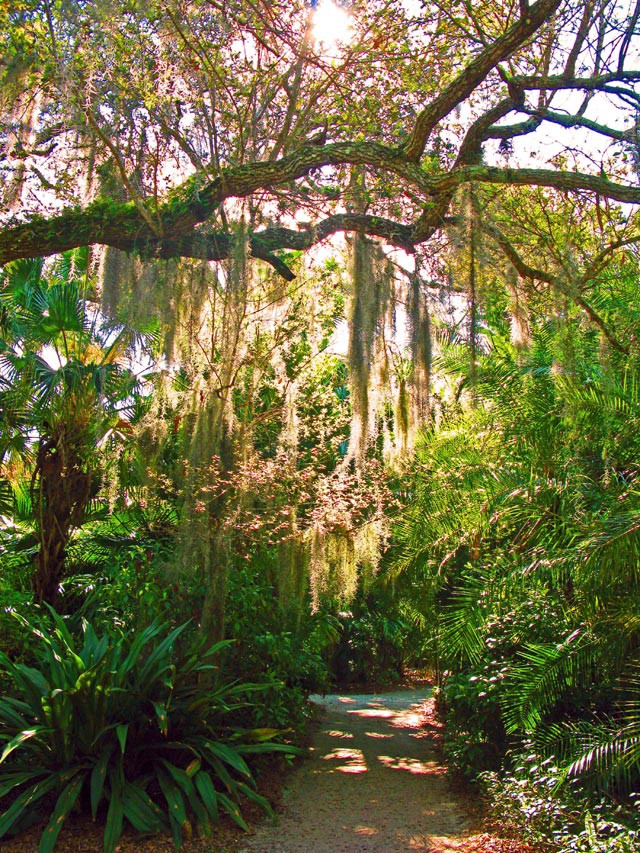
A toog tree (Bischofia javanica) was knocked over by Hurricane David in 1979 but continues to grow from its horizontal position.
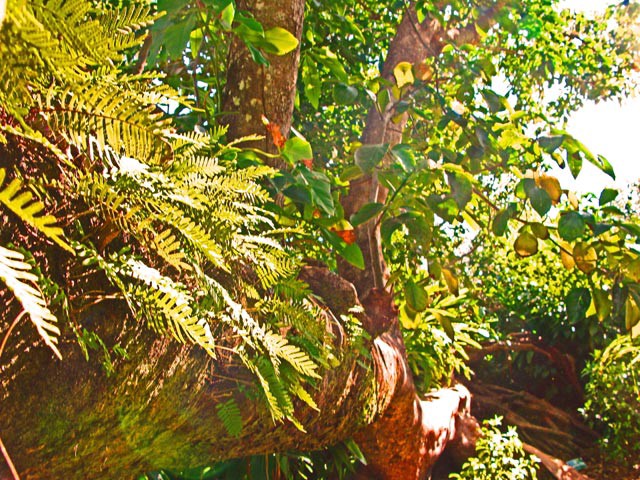
And ZOMG, there were dinosaurs everywhere! (Although I found the models garish and slightly disruptive, the installation was temporary and I did not begrudge the garden — which regrettably must compete with everything else for entertainment dollars — the opportunity to capitalize on dinosaur mania.)
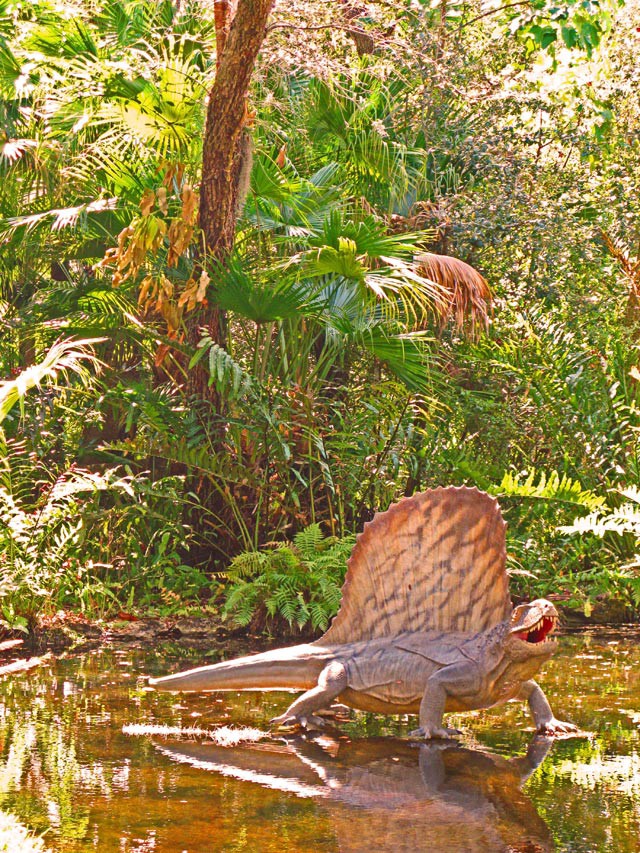
Back in the light, I spotted a chameleon (a relative, perhaps, of the above-pictured dimetrodon?) on a copper-leaf bromeliad.
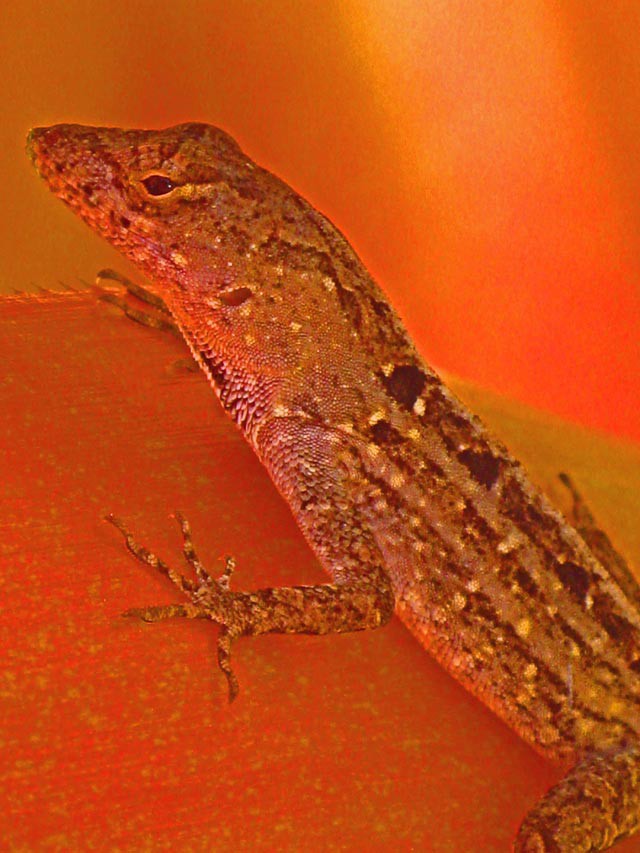
“So — how do you like Florida?” I asked the little dinosaur, and he considered the question. “Well, I retired here,” he said, “and the warm weather is good for my aching joints. Things could be better, I suppose, but then again, things could be much, much worse.”
Matthew Gallaway is a writer who lives in Washington Heights. His first novel, ‘The Metropolis Case’ is available for preorder. Yes you heard us right!
